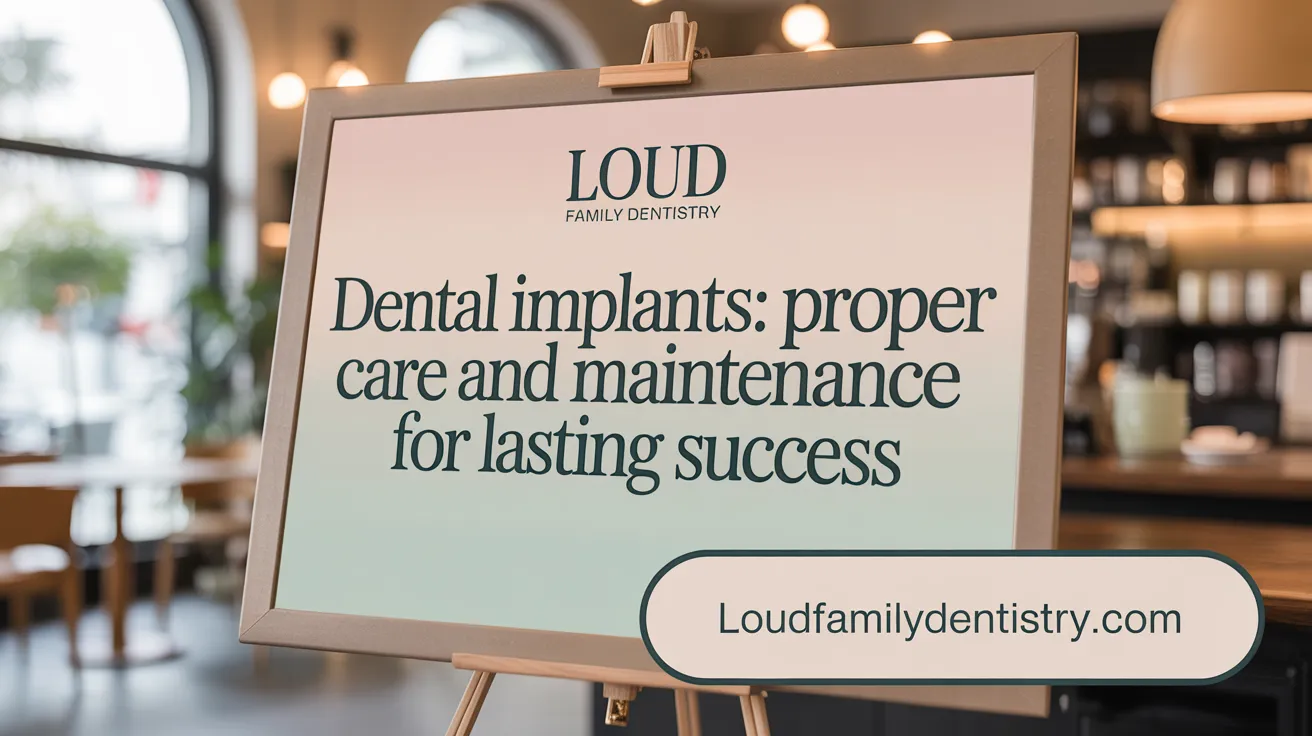Introduction to Dental Restoration Care
Dental restorations such as crowns, bridges, and implants are essential for restoring function, health, and aesthetics. Proper care is paramount to maximizing their lifespan and maintaining oral health. This guide outlines expert tips and best practices to ensure your dental restorations last as long as possible.
Dental Restoration Maintenance Key Facts
- Dental crowns have a durability of 10-20 years, with some lasting up to 30 with proper care.
- Effective crown maintenance involves daily brushing, flossing, and avoiding hard or sticky foods to prevent damage.
- Regular dental check-ups every six months are crucial for monitoring crowns and early detection of issues.
- Dental bridges typically last 10-15 years for traditional types, with implant-supported bridges lasting over 30 years.
- Cleaning bridges requires brushing, flossing using special tools, and avoiding damaging habits like nail-biting or biting hard objects.
- Protecting dental bridges involves using mouthguards for sports and avoiding using teeth as tools.
- Dental implants can last 15-30 years or even lifetime with proper maintenance and are secured by biocompatible titanium posts.
- Post-implant surgery requires gentle care, soft foods, and avoiding smoking to promote healing.
- Daily hygiene around implants includes soft-bristled brushing, specialized flossing, and antimicrobial rinses.
- Regular professional inspections and cleanings are essential for implants to prevent infections and monitor bone and gum health.
1. Effective Care for Dental Crowns: Protecting Your Restored Teeth

Types of Dental Crowns and Their Durability
Dental crowns come in several materials, each with distinct advantages. Common options include porcelain, ceramic, metal alloys, porcelain-fused-to-metal (PFM), and composite resin. Porcelain and all-ceramic crowns provide excellent natural aesthetics and are often used for front teeth. Metal crowns, including gold alloys, offer superior durability and are suitable for molars that face high chewing forces. PFM crowns combine strength with better appearance but may wear opposing teeth over time. Typically, crowns last between 10 and 20 years, depending on material quality and maintenance, with some lasting up to 30 years with proper care. For more information, see Dental crowns overview and Dental crown overview.
Daily Oral Hygiene Practices
Maintaining crowns requires diligent oral hygiene similar to natural teeth. Brushing twice daily with a soft-bristled toothbrush and fluoride toothpaste is essential to gently clean around the crown and gumline without causing damage. Flossing daily helps remove food particles and plaque buildup, especially at the crown margins, using gentle techniques or tools like floss threaders or water flossers to avoid dislodging the crown. Using an antibacterial fluoride mouthwash can further reduce bacteria and protect against decay beneath the crown. See also Proper oral hygiene for dental crowns and Dental crown care.
Dietary Considerations to Protect Crowns
Avoiding hard, sticky, or chewy foods helps prevent chipping, cracking, or loosening of crowns. Foods like ice, hard candies, caramel, and chewing gum should be consumed cautiously or avoided. Limiting sugary and acidic foods reduces the risk of decay around the crown margins. Incorporating a balanced diet rich in calcium, phosphorus, and vitamin C supports overall oral and crown health. Additional details on diet and dental crowns can be found at Proper oral hygiene for dental crowns and Dental crown aftercare steps.
Protecting Crowns from Mechanical Damage
Mechanical damage can result from habits such as teeth grinding (bruxism), nail-biting, or chewing hard objects like pens or ice. Wearing a custom-fitted nightguard can protect crowns from excessive forces during sleep. Additionally, avoiding using teeth as tools for opening packages or cracking nuts safeguards crowns from unnecessary stress and potential damage. For additional protection tips, see Avoiding damage to crowns and Nightguard for dental crowns.
Importance of Regular Dental Visits for Crown Monitoring
Regular dental check-ups, ideally every six months, allow dentists to monitor the condition of crowns and surrounding teeth. These visits enable early detection of issues such as crown loosening, cracks, decay, or gum disease. Professional cleanings remove stubborn plaque and tartar that can threaten crown longevity. Immediate dental attention for symptoms like pain, sensitivity, or noticeable crown damage helps prevent more significant problems and prolongs the functional life of the restoration. For more guidance, refer to Regular dental visits for crown care and Dental crown maintenance tips.
2. Maintaining Dental Bridges: Ensuring Stability and Functionality

What Types of Dental Bridges Are There and How Long Do They Last?
Dental bridges come in several types:
- Traditional Bridges: Supported by natural teeth on both sides; usually last 10 to 15 years. (How long does a traditional fixed dental bridge last?)
- Cantilever Bridges: Attached on one side; similar lifespan to traditional bridges but less suitable for back teeth. (Dental bridges overview)
- Maryland Bridges: Use metal wings bonded to adjacent teeth; last about 5 to 10 years and mainly used for front teeth. (Types of dental bridges
- Implant-Supported Bridges: Rest on implants fused to the jawbone; can last 30 years or longer with proper care. (Longevity of implant-supported dental bridges
The longevity depends on the type and quality of materials used, as well as oral care habits. (Importance of high-quality materials for dental bridges
How Should You Clean Dental Bridges Effectively?
Proper cleaning is vital to prevent plaque buildup and decay around bridges:
- Brush twice daily with a soft-bristled toothbrush and fluoride toothpaste. (Proper brushing techniques for dental bridges)
- Floss daily using specialized tools like floss threaders, interdental brushes, or water flossers to reach underneath the pontic (the artificial tooth). (Using floss threaders for bridges)
- Use an antibacterial or fluoride mouthwash to maintain gum health and freshen breath. (Using fluoride rinse for dental health
Avoid harsh scrubbing and abrasive toothpastes to protect the bridge materials. (Avoiding damage to dental bridges
What Dietary and Lifestyle Habits Help Preserve Dental Bridges?
To protect dental bridges:
- Limit sticky, chewy, sugary, and starchy foods, which increase the risk of decay around supporting teeth. (Tips to prevent decay around dental bridges
- Avoid hard foods such as ice, popcorn, and hard candies that can crack or dislodge the bridge. (Avoid damaging habits for dental bridges
- Stop harmful habits like nail biting or chewing on ice. (Proper oral hygiene for dental bridges
- Use a nightguard if you grind or clench your teeth to prevent excessive wear. (Using nightguards and mouthguards to protect dental bridges
Maintain a healthy diet to support gum and bone health around the restoration. (Maintaining dental implants)
Why Are Regular Professional Dental Checkups Important?
Visiting your dentist every six months helps:
- Monitor the fit and condition of the dental bridge and supporting teeth. (Importance of regular dental visits in bridge maintenance
- Perform professional cleanings that remove plaque and tartar buildup that home care may miss. (Professional Dental Cleanings
- Detect issues early, such as decay, gum inflammation, or loosening of the bridge, to prevent further damage. (Assessing condition of crowns and bridges)
Early intervention ensures the longer lifespan and proper function of your bridge.
What Protection Strategies Prevent Damage and Wear?
- Wear a mouthguard during sports to avoid trauma to your dental restoration. (Protecting dental crowns and implants
- Avoid using your teeth to open packages or bite hard objects. (Avoiding damage to dental bridges
- Practice gentle brushing and flossing techniques to prevent loosening or damaging the bridge. (Proper brushing techniques for dental bridges
By combining careful hygiene, attention to diet, and protective measures, you can maintain your dental bridge’s stability and functionality for many years.
3. Caring for Dental Implants: Securing a Lifetime of Smiles

What Makes Dental Implants Unique and Durable?
Dental implants stand out because they are titanium posts secured into the jawbone, acting like natural tooth roots. This fusion provides a stable base for crowns, bridges, or dentures and is highly durable. With proper care, implants can last 15 to 30 years or even a lifetime, thanks to the biocompatible nature of titanium and modern implant technology. For more details, see Dental implant lifespan and maintenance and Benefits of dental implants.
What Should You Do After Dental Implant Surgery?
After surgery, the healing phase, known as osseointegration, requires diligent care for a few months. Key post-surgical steps include:
- Avoiding spitting, bending over, or rinsing vigorously for 24 hours to preserve blood clots.
- Using cool packs to reduce swelling.
- Eating soft foods like yogurt, mashed potatoes, and scrambled eggs during the first week.
- Taking prescribed medications and avoiding smoking and alcohol to promote healing.
- Gentle brushing around the surgical site and saline rinses starting from day two.
Refer to Dental Implant Aftercare Guidelines and Post-Operative Instructions for Dental Implants for comprehensive aftercare instructions.
How Do You Maintain Daily Hygiene Around Implants?
Consistent good hygiene is crucial to prevent infections like peri-implantitis. Essential daily practices include:
- Brushing twice daily with a soft-bristled or electric toothbrush using non-abrasive toothpaste.
- Flossing daily with implant-specific floss, water flossers, or nylon-coated interdental brushes to remove plaque especially around implant abutments.
- Using antimicrobial or alcohol-free mouth rinses to reduce bacteria.
Detailed recommendations are available at 10 Tips for Maintaining Your Dental Implants and Proper Care for Dental Implants.
Which Dietary and Lifestyle Habits Affect Implant Success?
Certain habits can negatively impact implant longevity, so consider:
- Avoiding hard and sticky foods such as ice, caramel, and hard candies that can damage implants or restorations.
- Refraining from smoking and limiting alcohol consumption to promote better healing and reduce inflammation.
- Using a custom nightguard if grinding or clenching teeth to protect implants from undue stress.
Additional advice on lifestyle and diet for implant health can be found in Dental Implant Care Tips and Care for Dental Implants.
Why Are Professional Monitoring and Maintenance Important?
Regular dental visits, ideally every 3 to 6 months, help:
- Remove plaque and tartar buildup not removable by home care.
- Monitor the health of gums and bone around implants via examinations and radiographic imaging.
- Detect early signs of complications like swelling, redness, loosening, or discomfort.
- Perform professional cleanings using specialized instruments that protect implant surfaces.
For more information on professional care and maintenance, see Dental Implant Maintenance Overview, Routine Dental Implant Check-Ups, and Long-Term Care for Dental Implants.
Through a combination of attentive post-surgical care, daily hygiene, smart habits, and ongoing professional supervision, dental implants can provide stable, healthy smiles for decades.
Conclusion: Sustaining Dental Restoration Health
Maintaining crowns, bridges, and implants requires consistent oral hygiene, mindful dietary choices, protective habits, and regular dental visits. By following these expert recommendations, patients can significantly extend the life of their dental restorations, preserving both function and appearance. Proactive care not only prevents complications but also supports overall oral health, ensuring your restored smile remains strong and vibrant for years to come.
